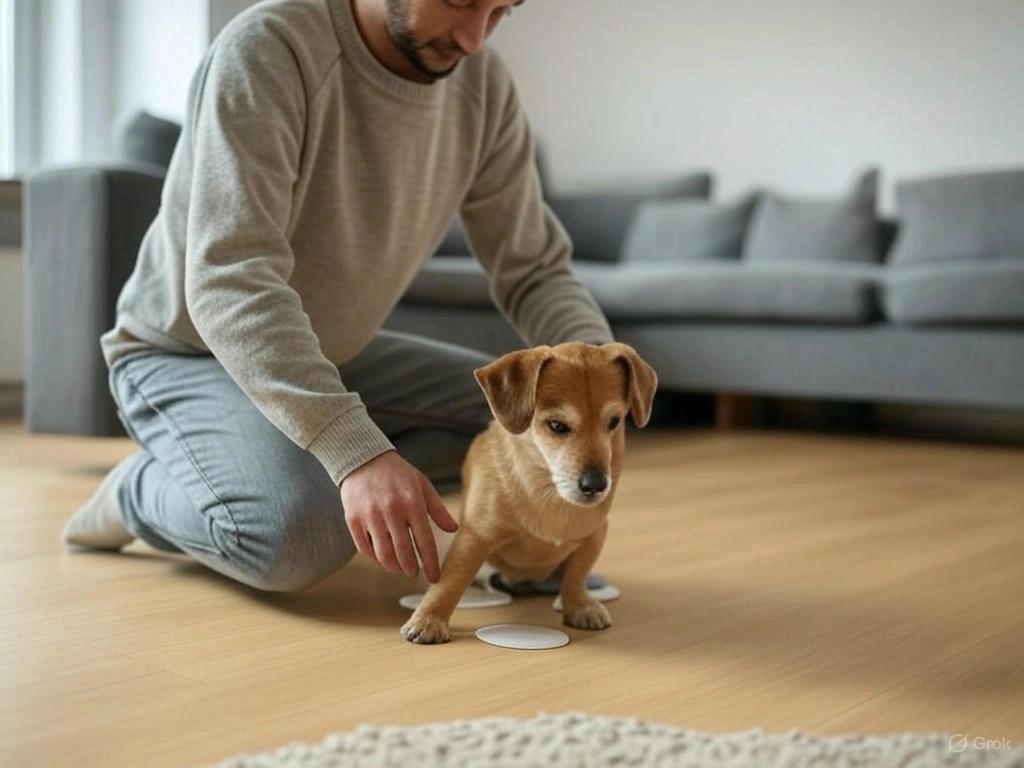How to Train Your Dog to Use Wee Wee Pads: A Step-by-Step Guide
Train your dog to use wee wee pads with this easy step-by-step guide, perfect for indoor potty training and young puppies.
Training your dog to use wee wee pads can be a game-changer, especially if you live in an apartment, deal with harsh weather, or have a puppy who’s not quite ready for outdoor potty breaks.
While some trainers warn that pads might confuse dogs transitioning to outdoor training, they’re widely regarded as an effective tool for indoor potty training when used correctly. With consistency, patience, and positive reinforcement, you can teach your dog to use wee wee pads confidently.
In this blog post, we’ll walk you through the process, from preparation to troubleshooting, so you and your furry friend can succeed.
Why Use Wee Wee Pads?
Wee wee pads, also known as potty pads, are absorbent sheets designed for dogs to urinate or defecate indoors. They’re particularly handy for:
- Puppies who can’t yet control their bladder (typically under 16 weeks).
- Apartment dwellers with limited outdoor access.
- Dogs in cold or rainy climates where regular outdoor trips are tough.
However, there’s a bit of debate among trainers. Some, like the folks at PetHelpful, argue pads might reinforce indoor peeing, making outdoor training trickier later. On the flip side, trusted sources like the American Kennel Club (AKC) and Animal Humane Society emphasize that with the right approach, pads are a practical solution. This guide focuses on making pad training work for you, with tips to avoid common pitfalls.
Preparing for Success
Before you start, set yourself and your dog up for success with a little prep:
- Choose the Right Spot: Pick a location in your home with hard flooring, like tile or laminate, for easy cleanup. This tip comes straight from Bond Vet.
- Disposable or Washable Pads?: Decide what works for your budget. The AKC notes that washable pads can save money over time.
- Gather Tools:
- Pad Holder: Keeps the pad secure, especially on slippery floors (Four Paws).
- Attractant Spray: Encourages your dog to use the pad, great for puppies or adult dogs new to pads.
- Enzyme-Based Cleaner: Products like Nature’s Miracle remove accident odors to prevent repeat mistakes.
Place the pad in its designated spot and let your dog sniff around to get comfortable with it.
Step-by-Step Training Process
Here’s a clear, structured plan to teach your dog to use wee wee pads, based on advice from experts like the AKC, Animal Humane Society, and The Puppy Academy.
1. Establish a Routine
Take your dog to the pad regularly—every 2-3 hours for most puppies, or every 15 minutes for very young ones. Key times include:
- After waking up
- After meals or drinks
- After playtime or naps
Use a leash to keep them focused, as suggested by the Animal Humane Society. A consistent schedule helps your dog learn when and where to go.
2. Use a Cue Word
Introduce a phrase like “go potty” every time you take them to the pad. Say it calmly while they’re on the pad to build an association. Rover.com and the AKC stress that this cue is crucial for long-term success.
3. Reward Success
When your dog uses the pad, shower them with praise and offer a treat immediately. Keep treats near the pad for quick rewards. Positive reinforcement, as highlighted by The Puppy Academy, makes your dog eager to repeat the behavior.
4. Supervise Closely
Watch for signs your dog needs to go, like sniffing, circling, or whining. Gently guide them to the pad if you spot these cues. The AKC recommends constant supervision when your dog isn’t crated to catch accidents early. If an accident starts, interrupt calmly with a quiet “oh-oh” or clap, then redirect to the pad.
5. Handle Accidents Calmly
Accidents will happen—don’t stress! Clean them up with an enzyme-based cleaner to eliminate odors that might attract your dog back to the same spot. Avoid punishment, as the Animal Humane Society warns it can create fear and slow progress.
6. Use a Crate or “Alone” Room
When you can’t supervise, confine your dog to a crate or a small room with pads covering the floor. Gradually reduce the number of pads every few days until just one remains, per the Animal Humane Society. Make sure the crate is just big enough for them to lie down comfortably to discourage soiling, as noted by the AKC.
7. Be Patient and Consistent
Potty training takes time, especially for puppies under 16 weeks who lack full bladder control. A rough rule of thumb: a puppy can hold it for their age in months plus one hour (e.g., a 4-month-old for about 5 hours). Stick to the routine, and don’t get discouraged—every dog learns at their own pace.
Age-Specific Tips
- Puppies: Start early, as they need frequent trips. The Animal Humane Society suggests a feeding schedule (food down for 15 minutes twice a day) to predict potty times.
- Adult Dogs: It’s never too late to train! Attractant sprays can help, and consistency is key, according to Four Paws. Expect it to take a bit longer if they’re used to going outside.
Transitioning to Outdoor Training
If your goal is to eventually move potty time outside, you can ease the transition:
- Gradually shift the pad closer to the door.
- Reduce the pad’s size over time.
- Use the same “go potty” cue outdoors and reward success.
This approach, recommended by the AKC, helps your dog adapt without confusion, addressing concerns from PetHelpful about indoor habits sticking around.
Troubleshooting Common Challenges
- Accidents Keep Happening: Step up supervision and ensure the pad stays in one spot. Revisit the routine if needed, per the Animal Humane Society.
- Dog Avoids the Pad: If your dog resists, especially if they’re used to outdoor training, try an attractant spray and be patient. Four Paws suggests this can make a big difference.
- Confusion with Outdoor Goals: If outdoor training is the endgame, start planning the transition early. The Spruce Pets advises clear cues to help your dog differentiate.
The Debate: Are Wee Wee Pads Right for You?
Most experts, like those at Rover.com and the AKC, agree that wee wee pads are effective with proper training. They’re a lifes lifesaver for puppies, apartment dogs, or during tough weather. However, PetHelpful argues they can teach dogs it’s okay to pee indoors, which might mess with outdoor training later. If indoor training is your long-term plan, pads are fantastic. If you’re aiming for outdoor pottying, consider starting outside or transitioning carefully. This guide assumes you’re focusing on indoor training, but the choice is yours!
Training your dog to use wee wee pads is all about consistency, patience, and positivity. Whether you’re housebreaking a tiny puppy or teaching an adult dog new tricks, these steps will guide you to success. Every dog is unique, so tweak the plan as needed for their age, breed, or personality. With time and love, you’ll have a pad-pro in no time! For more advice, dive into the resources above or reach out to a local trainer.
Happy training, and here’s to fewer messes in your home.


